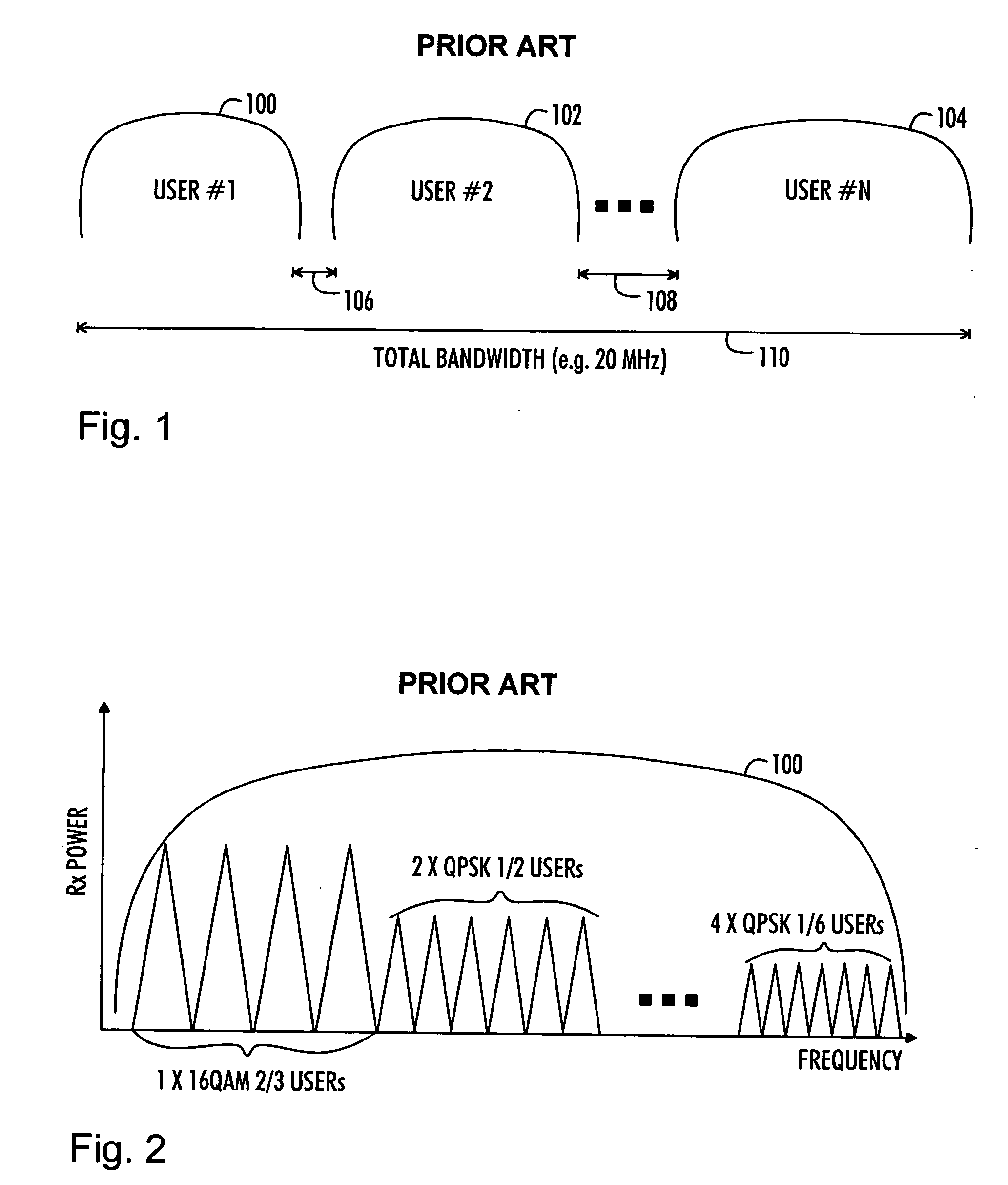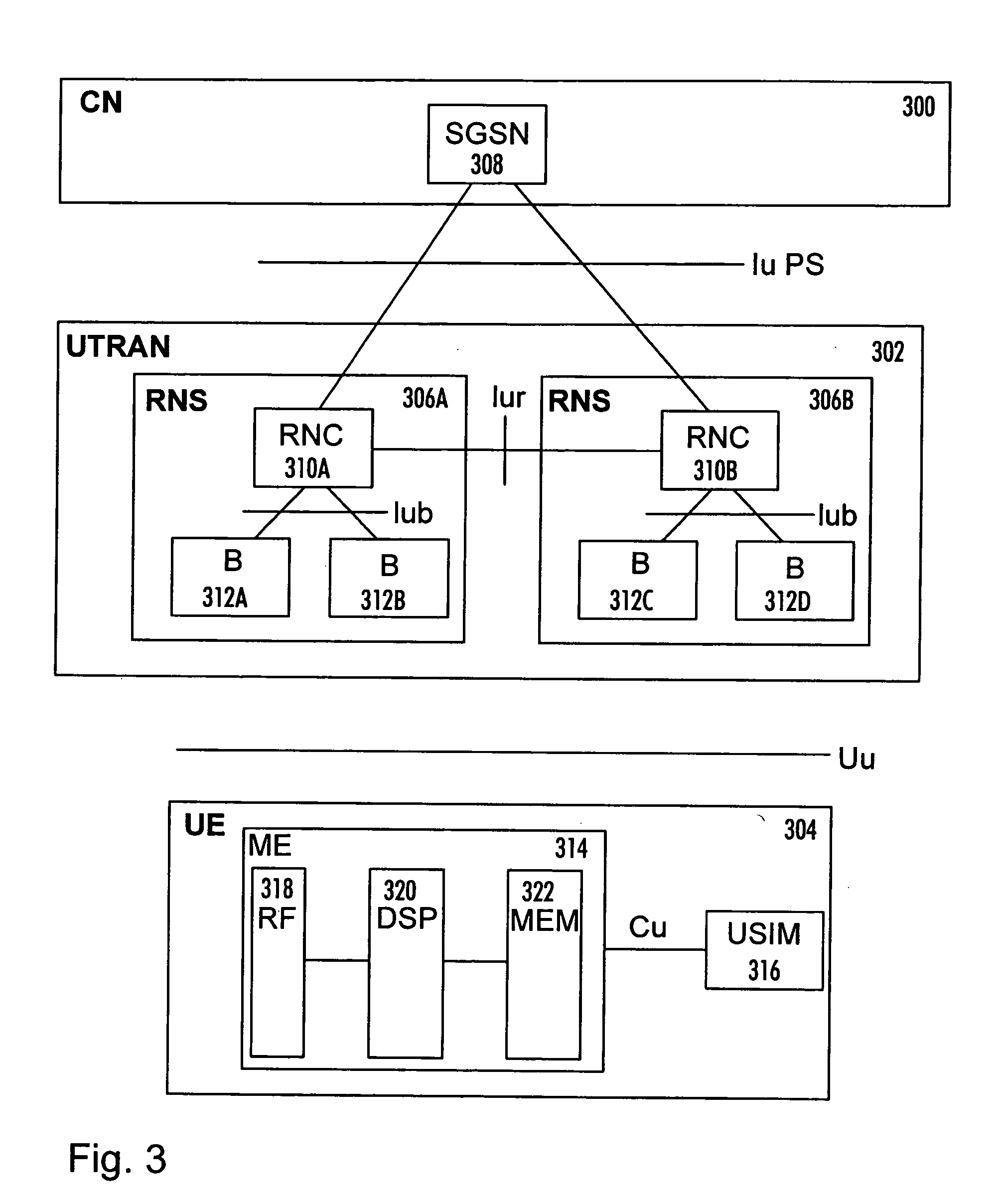Radio resource allocation in telecommunication system
- Summary
- Abstract
- Description
- Claims
- Application Information
AI Technical Summary
Benefits of technology
Problems solved by technology
Method used
Image
Examples
Embodiment Construction
[0026]FIG. 3 illustrates an example of a wireless cellular telecommunications system to which the present solution may be applied. Below, embodiments of the invention will be described using the UMTS (Universal Mobile Telecommunications System) as an example of the cellular telecommunications system. The invention may, however, be applied to other cellular telecommunication systems. The structure and functions of such a cellular telecommunications system and those of the associated network elements are only described when relevant to the invention.
[0027] The cellular telecommunications system may be divided into a core network (CN) 300, a UMTS terrestrial radio access network (UTRAN) 302, and a user terminal (UE) 304. The core network 300 and the UTRAN 302 compose a network infrastructure of the wireless telecommunications system.
[0028] The UTRAN 302 is typically implemented with wideband code division multiple access (WCDMA) radio access technology.
[0029] The core network 300 in...
PUM
 Login to View More
Login to View More Abstract
Description
Claims
Application Information
 Login to View More
Login to View More - R&D
- Intellectual Property
- Life Sciences
- Materials
- Tech Scout
- Unparalleled Data Quality
- Higher Quality Content
- 60% Fewer Hallucinations
Browse by: Latest US Patents, China's latest patents, Technical Efficacy Thesaurus, Application Domain, Technology Topic, Popular Technical Reports.
© 2025 PatSnap. All rights reserved.Legal|Privacy policy|Modern Slavery Act Transparency Statement|Sitemap|About US| Contact US: help@patsnap.com



